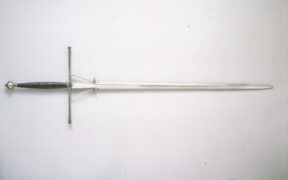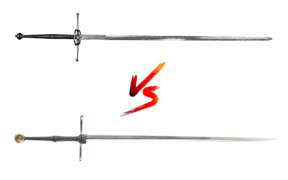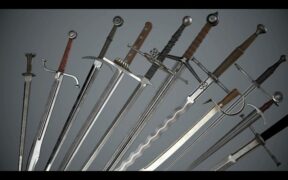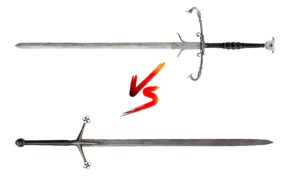Our content features commercial links to our products, committed to transparent, unbiased, and informed editorial recommendations. Learn More
History of European Two-Handed Great Swords
NO AI USED This Article has been written and edited by our team with no help of the AI
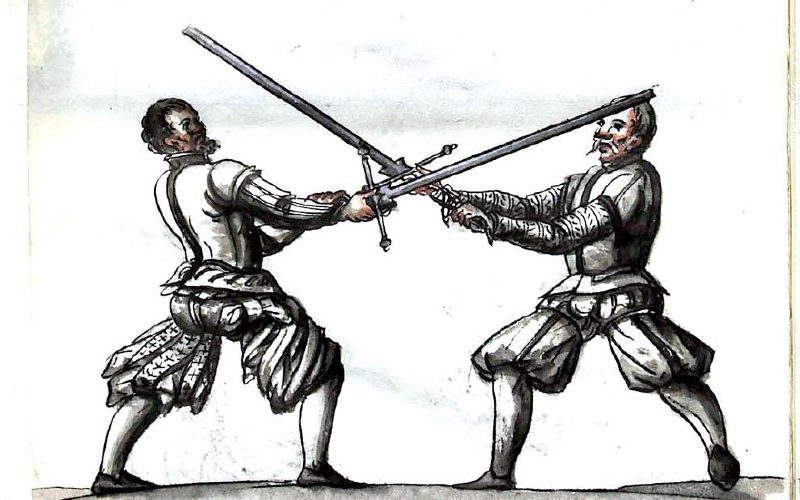
Of all the two-handed swords, none are as impressive as the German zweihander and the Scottish claymore. These early Renaissance swords were longer and more powerful than medieval swords, hence being called great swords. Let us explore the history of the European great swords, their use, and their unique characteristics.
The Great Swords of Renaissance Europe
In the early Renaissance, the term “great swords” referred to extremely large swords that were designed for two-handed use. While they were not as heavy as they looked, these formidable weapons required strength and skill.
1. Zweihander
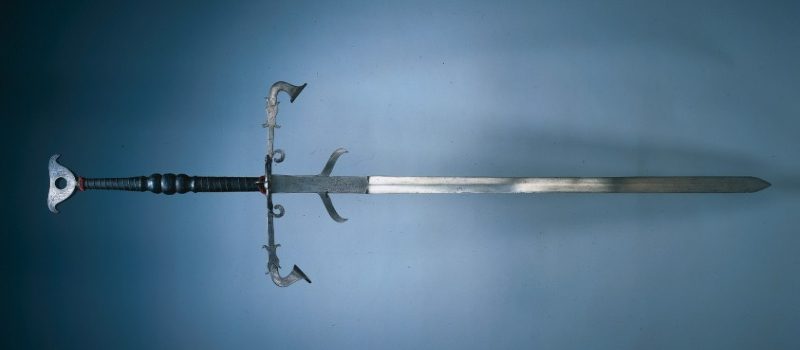
The longest European
2. Claymore

From the 15th to the early 17th centuries, the Scottish Highlanders used their two-handed
Characteristics of the European Great Swords
Great swords are distinguished by their exceptionally long blades and grips that allow the use of two hands. Today, the term great
Here are the characteristics of the European two-handed great swords:
Steel and Construction
Medieval and Renaissance swordsmiths were capable of producing steel swords that hold edges. The Landsknecht’s zweihander may not have employed the pattern welding technique of the time, but smiths likely forge-tempered them using excellent German steel.
In Scotland, Scottish swordsmiths also imported
Modern reproduction of European great swords often feature high carbon steel or stainless steel blades, though the latter is only for decorative purposes. In live-action role-playing games or LARP, participants use foam swords with a fiberglass core.
Blade Appearance
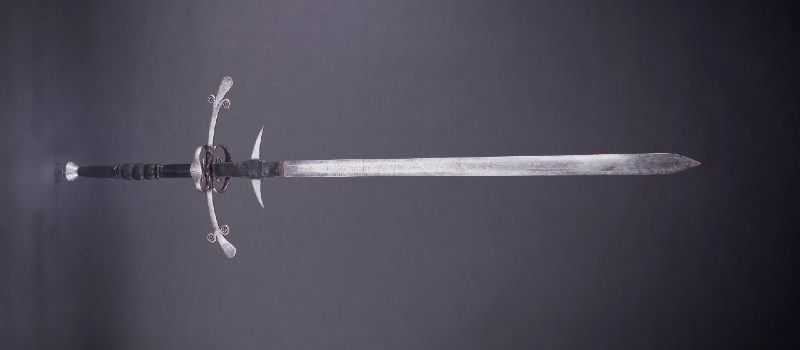
The German zweihander is most recognized by its parrying hooks or parierhaken that functioned as a secondary guard for the ricasso, the unsharpened part of the blade. It usually had a slim straight blade with a blunt or sharp tip.
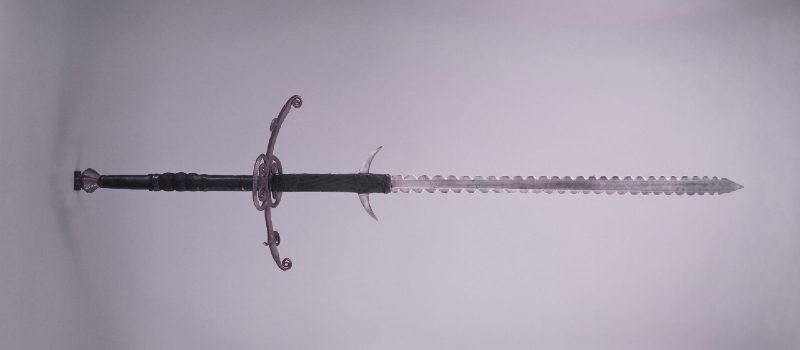
Other examples had flame-shaped or flammard blades, usually double-edged. The wavy, undulating blade is appropriately called flambards or flammards—from the German Flammenschwert or flame
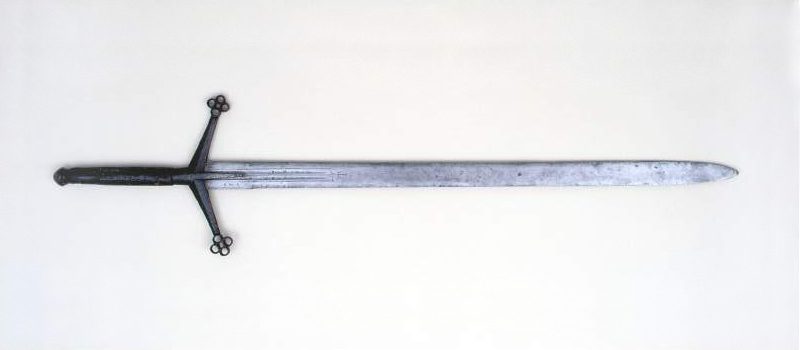
The Scottish claymore had a broad double-edged blade and a rounded tip. It may have had a ricasso but no parrying hooks or lugs. Some historical examples had decorations or incisions on the blade surface and langets, or metal strips extending down the blade. Modern reproductions often feature fullers or grooves to lighten the blade.
Size and Weight
Contrary to popular belief, great swords weighed far lighter than it looked. The Landsknecht two-handed
On the other hand, the Highland claymore may have an overall length of 120 to 140 centimeters and weigh around 5.5 pounds, making it smaller and more lightweight than the German zweihander. However, the
Sword Mounting
Great swords are commonly referred to as two handers, but their grips should not merely accommodate just two hands. The grip should be not less than 25 centimeters long, so that the wielder could easily hold the
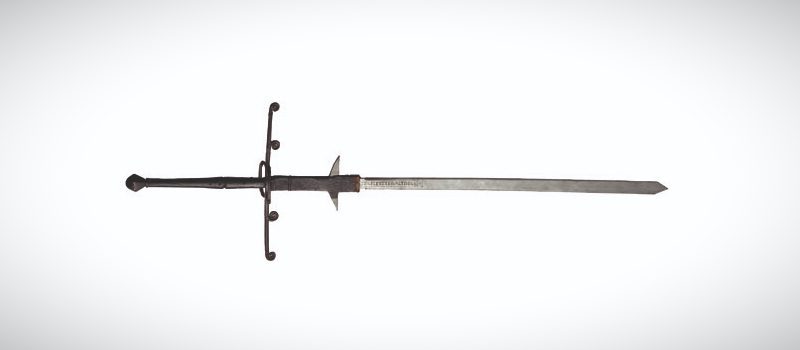
The German zweihander usually had a crossguard that curves toward the blade and side rings. However, later examples were more elaborate, usually ornamented with spirals. It usually had a rounded or pear-shaped pommel. Unlike most swords, great swords were not sheathed in traditional scabbards and worn on the belt. Instead, the Landsknechts carried them over the shoulder like a halberd.
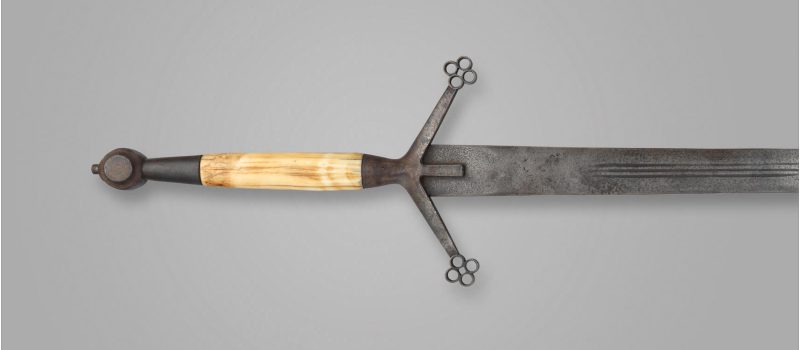
On the other hand, the Highland claymore features quatrefoil design at the end of the quillons, the arms of the crossguard. It has an openwork design, pierced with four holes. It usually had an iron hilt, a wooden grip covered in leather, and a wheel-shaped pommel. The Scots carried their great swords on their backs, usually with a shoulder sheath.
Facts About the Great Swords
The terminology used to identify various swords varied widely over time. Some broadly accepted names are also relatively modern and not historical terms. Today, great
Here are the things you need to know about the European great swords:
The German great swords were originally called doppelhänder or bihänder.
The term doppelhänder literally means double-hander, while bidenhänder translates as both-hander. Nowadays, these swords are known as zweihander which means two-hander, but it is actually a relatively modern name.
The term claymore became a generic name for different Scottish two-handed swords.
The name claymore is an English version of the Gaelic term claidheamh mór, which translates as great
The Lowland
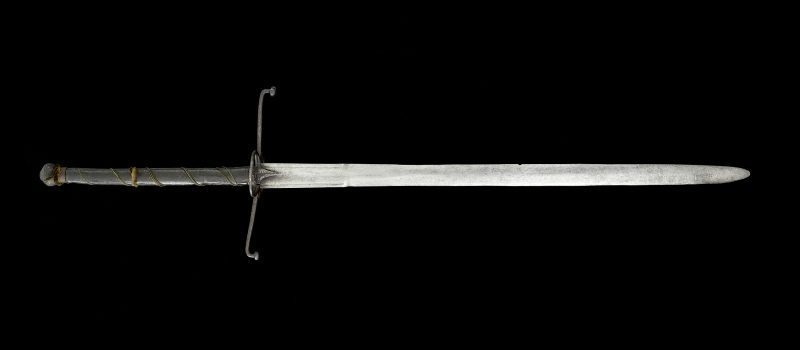
Sometimes called a Lowland claymore, the Lowland
The famous Wallace
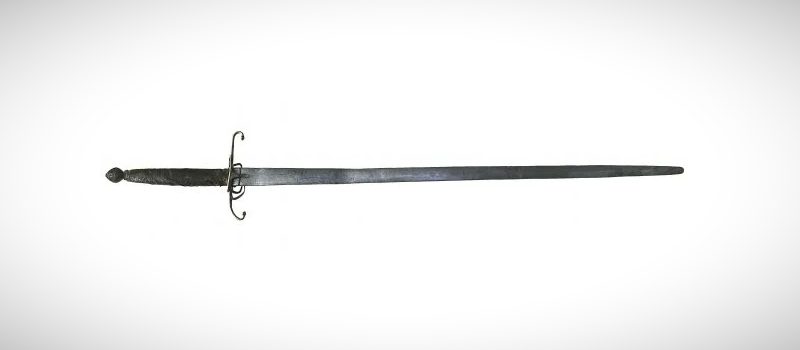
In Stirling, Scotland; the Wallace
The Scots and German Landsknechts armed themselves for war.
The German Landsknechts usually earned about four guilders monthly, a good income at the time, but they had to provide their own equipment. So, the majority had pikes, which were less expensive, about one guilder. However, the doppelsöldner in the advancing military force was armed with a two-handed great
Renaissance warfare required two-handed swords to chop off enemies’ pole weapons.
In the early Renaissance, fighting against pike formations was common. So, armies needed bladed weapons that could reach and cut off the shafts of long pole weapons such as pikes, glaives, and halberds. The doppelsöldners of the German Landsknechts used the zweihander and independently attacked the enemy’s pikemen. No wonder they earned their extra wages for their bravery.
The German great
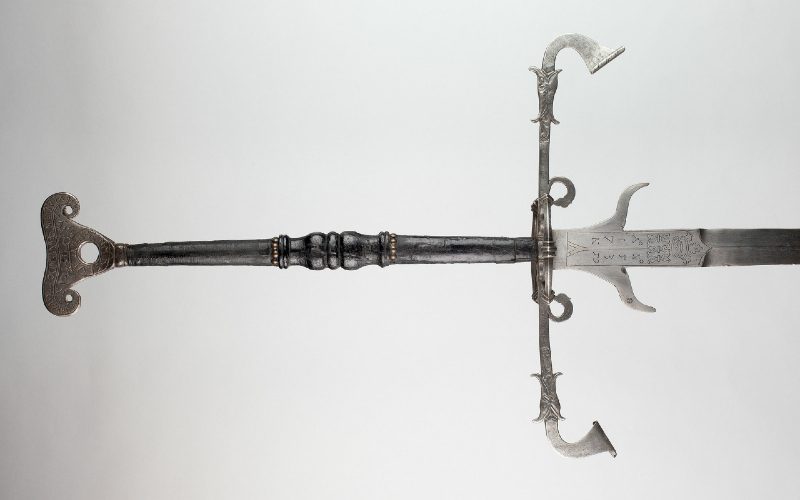
When two-handed great swords had lost their role on the battlefield, they survived as bearing swords or parade swords called paratschwerter. Most of them were too huge and heavy if not too delicate, to be considered a weapon. The Swiss also used ceremonial zweihanders with ornately etched designs and lettering.
The name claymore also refers to the 18th-century Scottish broadsword.
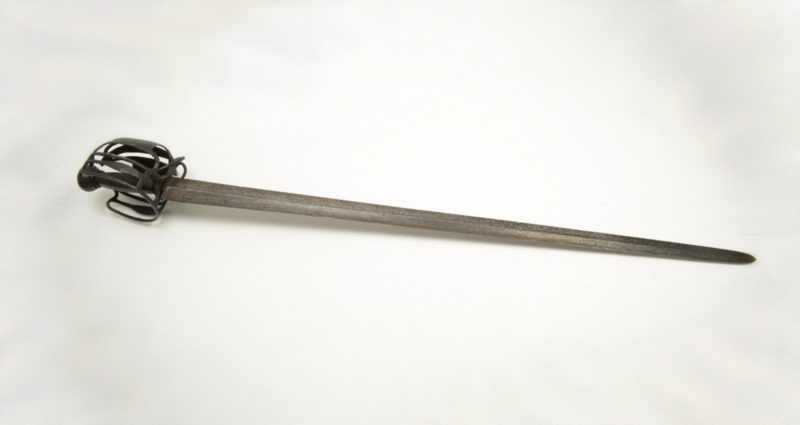
The basket-hilted broadswords later replaced the original claymore. However, it is a single-handed
Outside Europe, the Japanese also had an extremely long
The samurai may be known for their katana, but their longest
European great swords inspired several fantasy weapons in films and role-playing games.
Based on the story of William Wallace, the Braveheart film sparks interest not only in medieval longswords but also in Scottish claymore swords. On the other hand, the German zweihander is one of the best weapons in famous video games like Elden Ring, Dark Souls, and others.
German Zweihander vs. Scottish Claymore
When comparing both, the German great
The Scots traditionally armed themselves with claymore and other weapons, and their so-called great
On the other hand, the German two-handers developed in response to a specific need, particularly lopping off the shafts of the enemy’s pikes. The doppelsöldner was the fiercest soldier who wielded the zweihander, not all the Landsknechts. Also, the Landsknechts carried the zweihander over their shoulders, the same manner they carried a halberd, but the Scots carried the claymore in a sheath across their backs.
History of the European Great Swords
European swords adapted to changes in armor and battlefield tactics of the time. During the Middle Ages, most infantry swords were easier to wield. By the late 15th century, heavier weapons and the so-called great swords became popular, particularly in Scotland and Germany.
The Medieval Swords of Knights
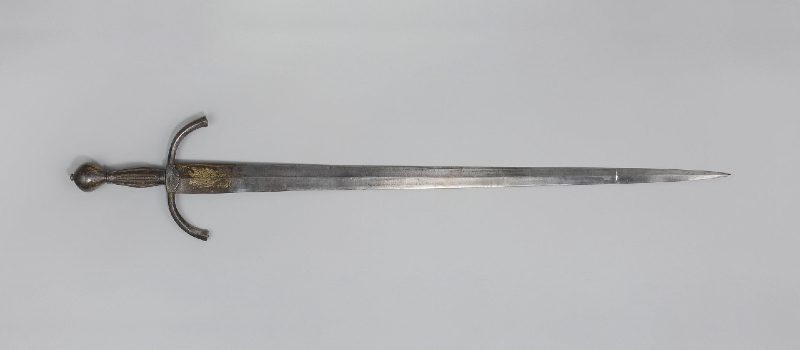
The knights were the elite fighting men of medieval Europe and remained a dominant force until the 16th century. Medieval knights used the arming
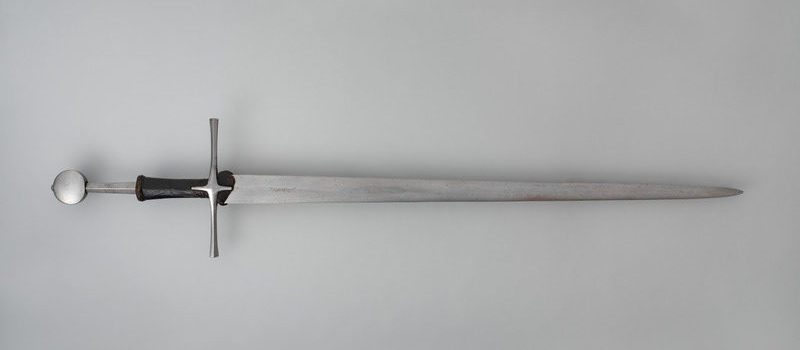
The knights also used the hand-and-a-half
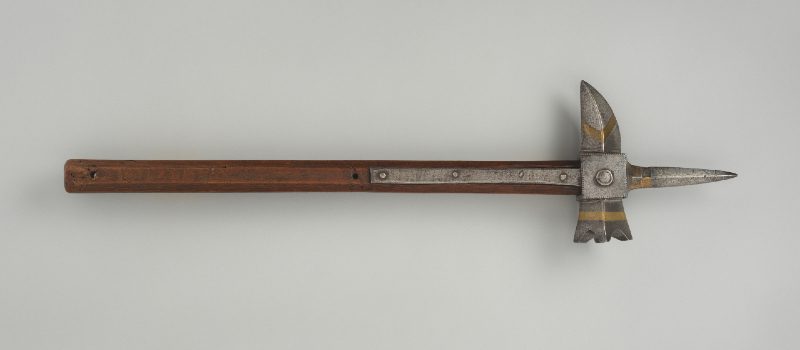
By the 13th and 14th centuries, plate armor became widespread on the battlefield. Unlike the mail armor composed of interlinking rings, it was dismissive of slashing blows, so knights used longswords and blade designs that are efficient in the thrust rather than the cut. Longswords allowed a two-handed use but were lightweight enough to wield with one hand. Their weapons also included maces and war hammers for breaking armor.
Evolution of the Scottish Swords
In the Middle Ages, the typical Scottish
From the 14th or 15th century, Scottish swords featured heavy wheel-shaped pommels and downward sloping quillons—or arms of the crossguard. The Highland two-handed
The Two-Handed Great Sword in Scotland
After the Battle of Flodden in 1513, the Scottish government required its men to be armed with two-handed weapons, including the claymore. Battle-axes were associated with the fighting techniques of the Scots, and the Scottish commanders must have realized that the two-handed swords suited the attacking tactics of their men. Later, two-handed swords also became the weapon of choice against the armored knights of England.
The German Landsknechts on the Battlefield
The Landsknechts were mercenary fighters recruited mostly from the Holy Roman Empire, which comprised much of modern-day Germany. Emperor Maximilian I hired them in 1486, as he wanted his own infantry force to match the Swiss pikemen who were the elites of European battlefields at the time.
The core of Landsknechts battlefield formation was a phalanx of pikemen, but the doppelsöldners used the zweihander to strike aside enemy pikes and break up infantry formations. Some soldiers also carried a short
By the 16th century, pike formations became unsuitable on the battlefield, mainly due to the advances in gunpowder. Hence, the zweihander functioned more as a ceremonial weapon, carried on parades and formal processions. Unlike the two-handers used on the battlefield, parade swords were often heavier and more ornate.
Great Swords vs. Longswords
Unlike the medieval longsword, the Renaissance two-handed great swords were too large to be worn on the belt. While the former required the use of both hands, hence the name two-hander, the longsword was lightweight enough to be used single-handed, yet its long grip could accommodate two hands. They were also not wielded the same way, as their length and weight required different movements.
Longswords may have had blades longer than other swords, but they did not have the superior reach of the Scottish Highland claymore and German zweihander. The knights traditionally carried their longswords in scabbards, fastened to the skirt of their armor. On the other hand, the Renaissance soldiers carried the great swords across the back or over the shoulders.
Conclusion
The European two-handed great swords were some of the most formidable weapons in history. The German zweihander and the Scottish claymore remind us of the military prowess of the Renaissance armies and how their skill and bravery shaped the European battlefields. Today, great swords remain a popular theme in pop culture, often seen in films, animations, video games, and LARP.
